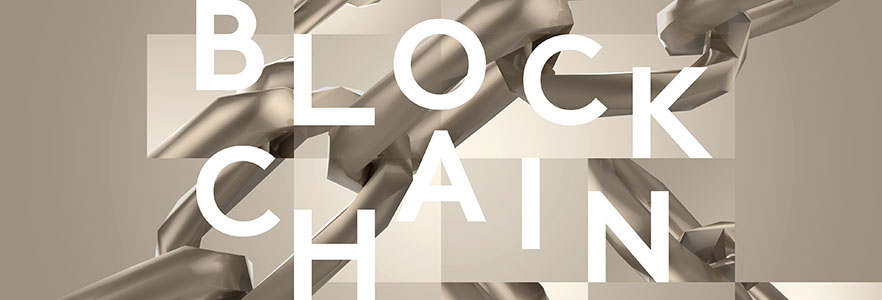Blockchains will change construction
Blockchain technology could play a key role in the emerging digital built environment.
The construction industry is ripe for disruption, greater transparency in supply chains is much needed, paperwork is still predominant, and as building components increasingly become ‘intelligent’ there is a need for a secure digital ledger for sensors, owners and operators. Blockchains, if implemented correctly, could improve construction’s transparency and efficiency in a number of ways.
First, a definition. A blockchain is a decentralised, tamper-proof digital ledger of transactions. The world’s first encounter with Blockchain technology was in 2009 with the launch of Bitcoin, a digital peer-to-peer cash system.
Bitcoin’s blockchain, among other ingredients, is the answer to a problem computer scientists had been trying to solve for years: how to create a digital asset that cannot be copied. It allows two or more parties to transfer monetary or any other representation of value, share information and run automated ‘smart’ contracts in a way that does not rely on a trusted third party like a bank, a notary or any private company as a trusted middleman.
The ability to create, validate, authenticate and audit contracts and agreements in real-time, across borders, without third-party intervention, makes Blockchain technology appealing to many professional services organisations. Many global financial and legal institutions are exploring and discussing the potential impacts and opportunities of Blockchain technology in their businesses.
The security gains and cost savings for the financial, legal and technology sectors are obvious. Design, engineering and construction need to now examine the benefits of this technology.
The decentralised, permission-less and censorship-resistant approach of Blockchain technology opens up completely new ways to track the flow of materials, contracts and payments in supply chains. Knowing in real-time which materials have arrived at a construction site, who handled them and where they originate from, makes a blockchain potentially valuable to the operation of a circular economy.
The complex data-sets that designers and engineers produce in Building Information Modelling (BIM) software are increasingly useful to a building’s ongoing operation, and Blockchain Technology has a potential key role to play here too. This could include smart self-executing contracts between the owner, operator and component or system suppliers involved. A Blockchain could also be used to verify who added which components to the digital model.
The Internet of Things requires a ledger of things. For as more and more things become interconnected, be it in transportation, infrastructure, energy, waste or water, we will need a trusted system for transactions between these autonomously provided services and information sources. A decentralised, industry-wide Blockchain could play a central role here.
It is important to not just look into ‘Blockchain’ because everybody does but rather try and understand the fundamental change a well implemented, open and immutable Blockchain offers the industry over paper and decade old shared database systems.
Please find the original article here.
Written by Matthias Geipel, Management Consulting Team, Arup.
--Future of Construction 10:03, 20 Oct 2017 (BST)
[edit] Related articles on Designing Buildings Wiki
- 5 things leaders can do to create a truly circular economy.
- Blockchain could transform the construction industry.
- Blockchain definitions.
- Blockchain in the built environment.
- Blockchain technology in the construction industry.
- Circular economy.
- Digital technology boost to construction industry.
- Eliminating waste at scale – opportunities for blockchain.
- How to utilise technology in construction projects.
- Is disruptive innovation possible in the construction industry?
- Non-fungible token NFT.
- Student projects released as non-fungible tokens.
- The future of the built environment in a revolutionary age.
- Unprecedented innovation and new technologies on the horizon.
Featured articles and news
One of the most impressive Victorian architects. Book review.
RTPI leader to become new CIOB Chief Executive Officer
Dr Victoria Hills MRTPI, FICE to take over after Caroline Gumble’s departure.
Social and affordable housing, a long term plan for delivery
The “Delivering a Decade of Renewal for Social and Affordable Housing” strategy sets out future path.
A change to adoptive architecture
Effects of global weather warming on architectural detailing, material choice and human interaction.
The proposed publicly owned and backed subsidiary of Homes England, to facilitate new homes.
How big is the problem and what can we do to mitigate the effects?
Overheating guidance and tools for building designers
A number of cool guides to help with the heat.
The UK's Modern Industrial Strategy: A 10 year plan
Previous consultation criticism, current key elements and general support with some persisting reservations.
Building Safety Regulator reforms
New roles, new staff and a new fast track service pave the way for a single construction regulator.
Architectural Technologist CPDs and Communications
CIAT CPD… and how you can do it!
Cooling centres and cool spaces
Managing extreme heat in cities by directing the public to places for heat stress relief and water sources.
Winter gardens: A brief history and warm variations
Extending the season with glass in different forms and terms.
Restoring Great Yarmouth's Winter Gardens
Transforming one of the least sustainable constructions imaginable.
Construction Skills Mission Board launch sector drive
Newly formed government and industry collaboration set strategy for recruiting an additional 100,000 construction workers a year.
New Architects Code comes into effect in September 2025
ARB Architects Code of Conduct and Practice available with ongoing consultation regarding guidance.
Welsh Skills Body (Medr) launches ambitious plan
The new skills body brings together funding and regulation of tertiary education and research for the devolved nation.
Paul Gandy FCIOB announced as next CIOB President
Former Tilbury Douglas CEO takes helm.
























